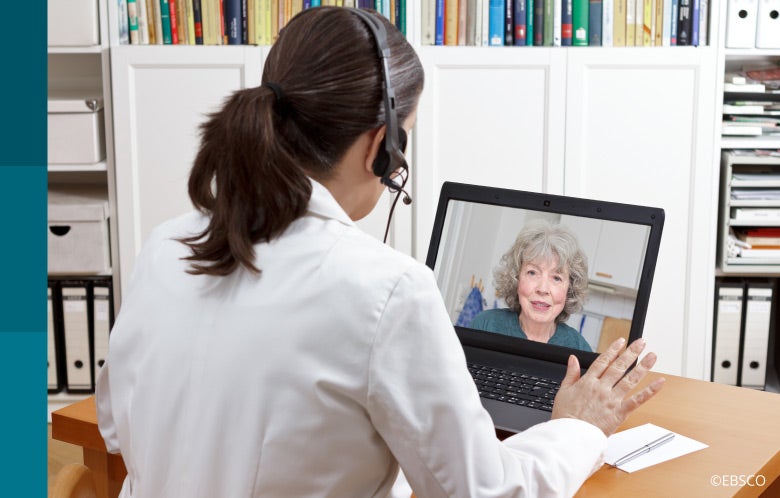I have been known to procrastinate; particularly (and ironically) with regard to my own health care maintenance. Alas, when I went to book an appointment with my usual optometrist to take advantage of my annual vision benefits, the appointment wait time was longer than an Avengers movie. Unwilling to be deterred from my mission, I booked an appointment at an unfamiliar eyewear chain. I arrived (on time) and the manager told me she would take me back for my REMOTE optometry appointment. My pupils dilated (and not from drops) at the idea of a completely virtual eye exam. How could the precision required to perform an eye exam be accomplished?! I was about to find out.
The manager sat me in front of equipment that recorded my visual fields along with other eye metrics. As each test concluded, an ethereal voice declared, “Exam uploaded.” Then, a webcam recorded my eye movements and pupillary function as I followed a penlight moved with practiced ennui by the manager. Next, I was brought to a second room where I was connected via video to the optometrist. She determined my ocular prescription by remote control of the equipment as I dutifully responded to the comfortingly familiar “Which is better… number one or number two?” Finally, she reviewed my uploaded exam and screen-shared my fundoscopic photos marking them like a football coach on a whiteboard as she declared my eyes healthy. The whole experience took about 15 minutes and I left with a new pair of glasses that look the same as the ones I have now. Change is hard.
Telehealth allows clinicians to evaluate patients who may have significant temporary or permanent barriers to in-person evaluation and offers a rare peek into their home environment.
Telehealth allows clinicians to evaluate patients who may have significant temporary or permanent barriers to in-person evaluation and offers a rare peek into their home environment.
As amazed as I was, I probably shouldn’t have been. As a Med-Peds physician, the pandemic thrust me into the river-rapids of telehealth without a paddle. Over the past (almost) three years the river has calmed, and I have taken the lessons learned and combined them with a review of the literature to develop a virtual telehealth curriculum for health profession students.
Here’s what I know. Telehealth is NOT new. It’s been around since the turn of the century but has been limited in scope as insurance companies didn’t cover its use except in very specific circumstances. COVID changed all that. Now, most forms of telehealth are reimbursed as equivalent, legitimate alternatives to in-office visits. As the public health emergency morphs into something different, it remains to be seen if virtual options will remain covered. Evidence suggests they should. The most recent evidence suggests overwhelmingly high patient satisfaction.
Telehealth allows clinicians to evaluate patients who may have significant temporary or permanent barriers to in-person evaluation and offers a rare peek into their home environment. For example, I recently conducted a video visit for a child with a mild upper respiratory infection. While engaging with the family, I noted that their smoke detector was chirping. I asked about it, counseled them on the importance of changing batteries, and encouraged them to be firm with their landlord who had been dragging his feet when asked to address it. This may seem silly, but this virtual visit allowed me to address an important social issue that would have been missed in the office.
To be fair, telehealth has its limitations. It is an alternative resource requiring a different skill set and should be approached with different expectations. Currently, telehealth is best for evaluating and triaging minor issues, following up on chronic illness, providing counseling and anticipatory guidance, and performing screenings and home assessments for patients who are homebound or have mobility or transportation limitations. Unfortunately, many providers remain uncomfortable with telehealth due to a discomfort with their own telehealth skills, the belief that virtual care is sub-standard, or the lack of infrastructure support to incorporate telehealth into their daily practice. As time from “ground zero” has marched on, fewer patients and providers are taking advantage of telehealth opportunities that could provide high quality, accessible, and convenient care to patients, which is a shame.
To provide the best care possible, we providers need to constantly update our skills. This includes integrating telehealth into our practices when appropriate. I’ll say it again — change is hard. But if I can get a complete virtual eye exam, we should be able to figure out how to make use of this tool for many other tasks.
For more information on telehealth settings in specific circumstances, see the DynaMedex topics on Comprehensive Geriatric Assessment, Routine Prenatal Care, Hypertension, and Co-occurring Substance Use Disorder and Mental Health Disorder.



